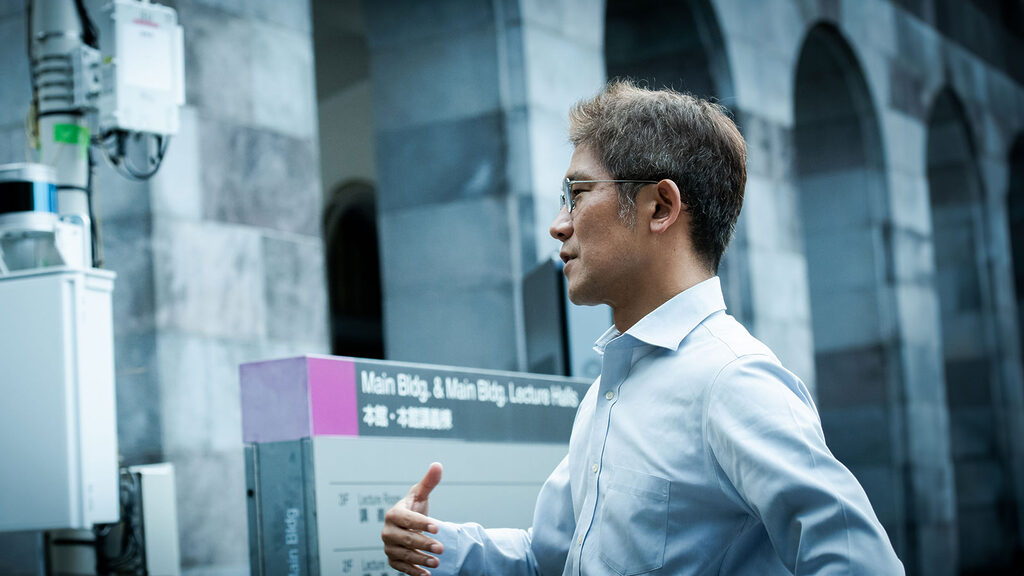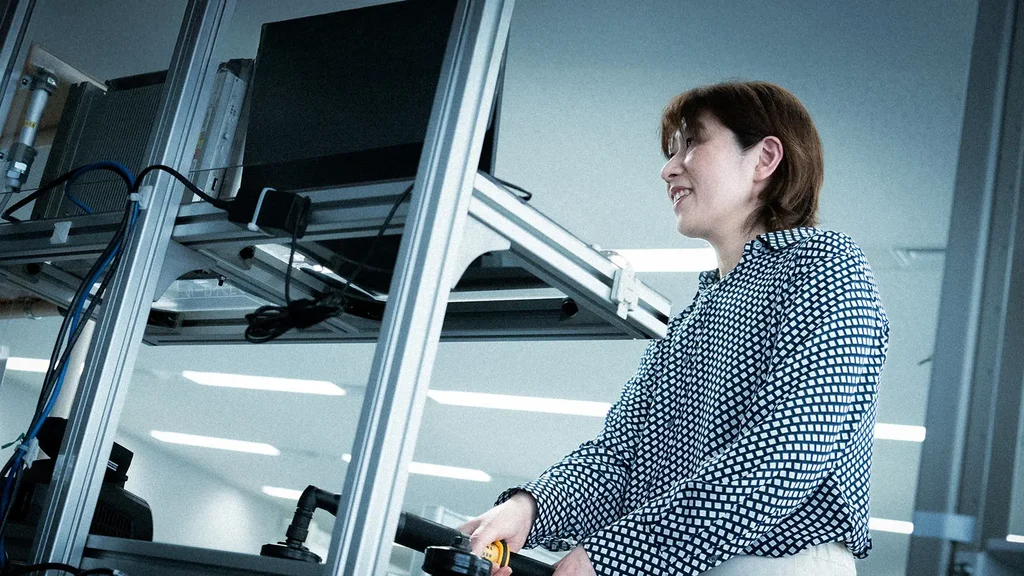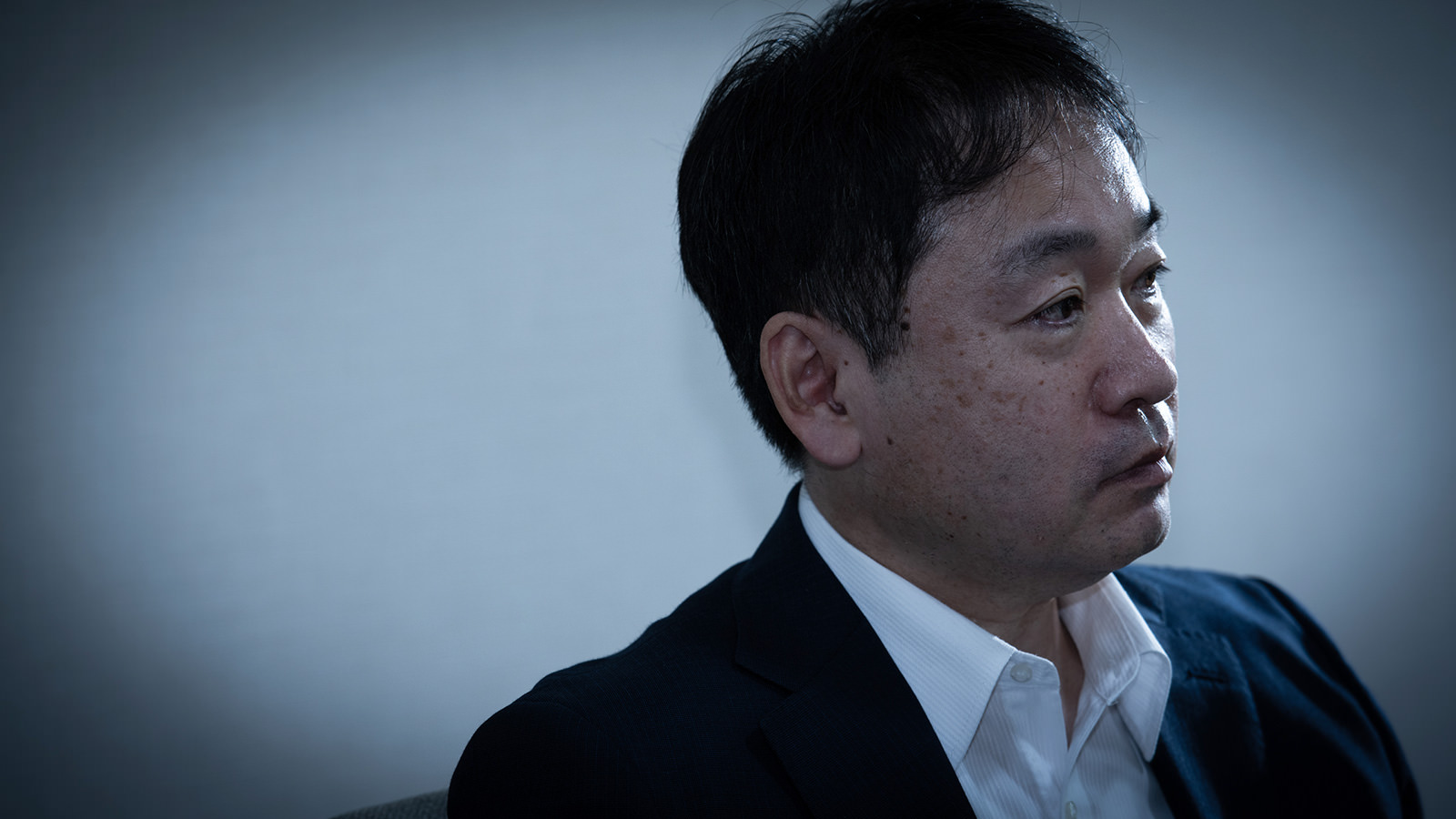
Connecting the "Dream" and "Reality" of Advanced Technology
Researchers running commercial trains with superconducting power transmission (Masaru Tomita, Railway Research Institute)
ODAIBA IX Core/Industrial Transformation (IX) Leaders
Leaders Transforming Industrial Technology (No. 2)
To the average person, there are technologies that seem far in the future. Superconductivity, in which electrical resistance is reduced to zero under certain conditions, may be classified as one such future dream technology. Mr. Masaru Tomita has been involved in the research and development of superconductivity at the Railway Technical Research Institute for many years.
2024/10/17
Posted on 10/17/2024
To the average person, there are technologies that seem far in the future. Superconductivity, in which electrical resistance is reduced to zero under certain conditions, may be classified as one such future dream technology. Mr. Masaru Tomita has been involved in the research and development of superconductivity at the Railway Technical Research Institute for many years. He has not only provided superconducting magnet technology for the Linear Central Shinkansen, which is still a dream for the future, but has also been able to verify the operation of superconducting power transmission technology by applying it to commercial railroads in operation. We asked Mr. Tomita about the efforts of researchers to link cutting-edge technology with real-world problem solving.
Using "superconductivity" technology to eliminate losses in railroad power transmission systems. It was March 2024 when news of the world's first operational verification, which began on the Sunzu Line of the Izu Hakone Railway, broke out. The superconducting power transmission, which utilizes the superconductivity phenomenon where electrical resistance becomes zero below a certain temperature, is expected to reduce the number of substations and save electricity. The Railway Technical Research Institute (Railway Research Institute) developed this technology.
Masaru Tomita, Director of the Department of Surface Transportation Technology Research at the Railway Research Institute, who has been conducting superconductivity-related research, said, "Superconductivity was a big topic at one time, but many people may wonder what has happened to it recently. This time, high-temperature superconductivity, which is cooled using liquid nitrogen at -196°C, was used to supply electricity for commercial operations of Izu Hakone Railway. We hope to expand these efforts to other railroad operators," he says.
Many readers may remember the high-temperature superconductivity boom of the 1980s and 1990s. On the other hand, it has become less of a major topic since then. Of course, the Linear Central Shinkansen will use superconducting magnets as the core technology, but the basic technological development has already been completed, while the practical application is far away, after 2034. Against this backdrop, he said, "We are running trains using high-temperature superconductivity on the Izu Hakone Railway, which is still in commercial operation today. I feel that I must tell people while I am still in good health that superconductivity is not a pipe dream but something useful for the world," says Tomita. Superconductivity is not a "dream" technology that will be realized "someday" for public transportation.
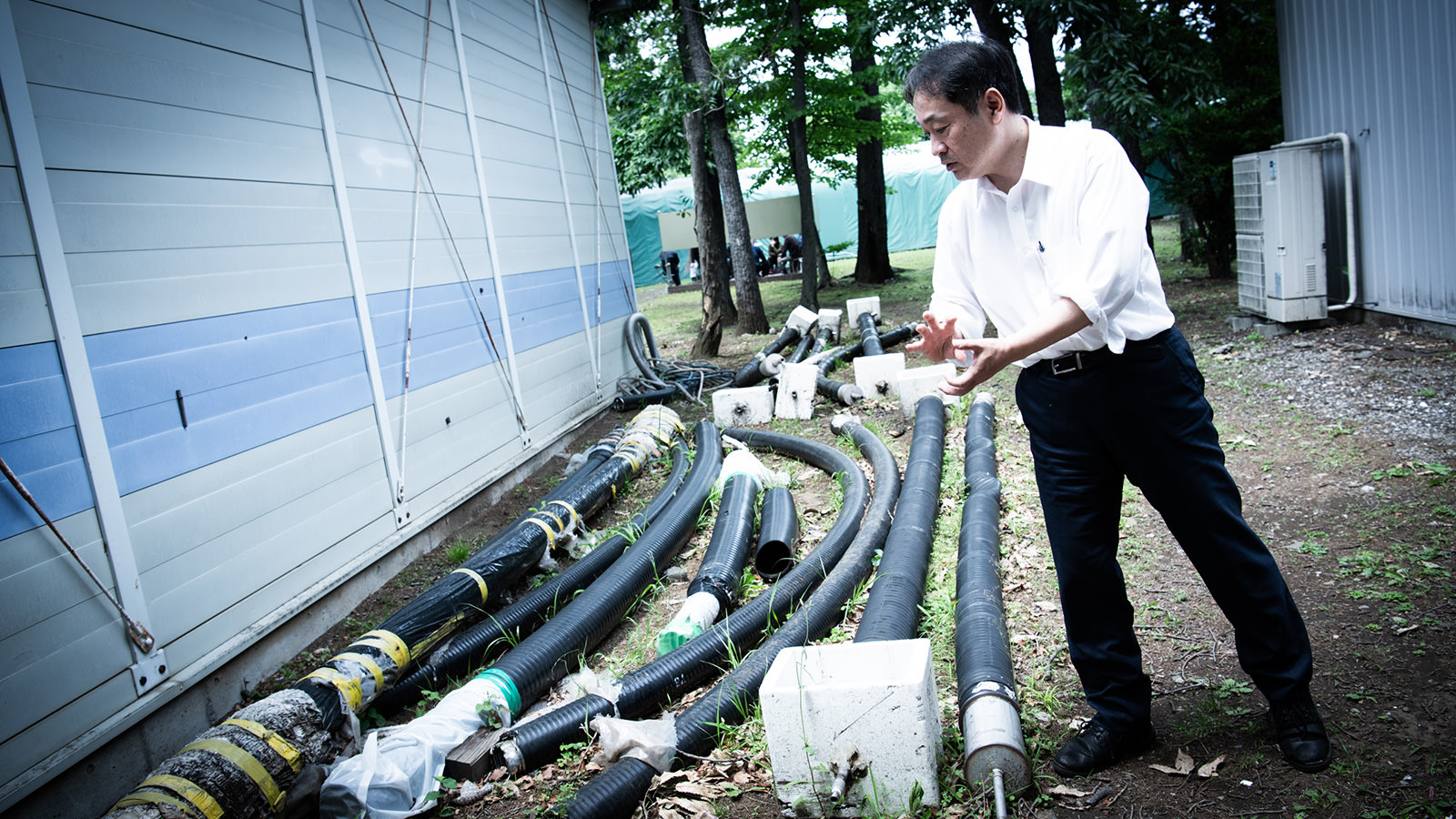
From superconductivity for linear systems to the development of technology to be published in Nature
Mr. Tomita, who had consistently continued research and development of superconductivity at the Railway Research Institute, visited the Miyazaki Test Line, which was then being set up as a facility for running linear motor cars, and continued to work toward the practical application of superconducting magnets. When the Yamanashi Test Center was opened in 1996, he moved on to on-site verification of the cooling system, including a cryostat that maintains a helium-cooled environment, and the ability of the superconducting magnets to handle the shaking of actual trains. The basic form of the system is now ready for commercial operation, and I am no longer involved in the direct development of the system," said Mr. Kato. But I still go to the Yamanashi Test Line when there are issues that need to be addressed. This is because it is essential to conduct research and development that links basic research with the exit from the field," says Tomita.
After the introduction of superconducting magnets in linear motor cars became a reality, Mr. Tomita himself was transferred to the Superconductivity Engineering Laboratory, a research institute specializing in superconductivity. The institute was funded by the Railway Research Institute and manufacturers. I was sent there to conduct research on high-temperature superconductivity," says Tomita.
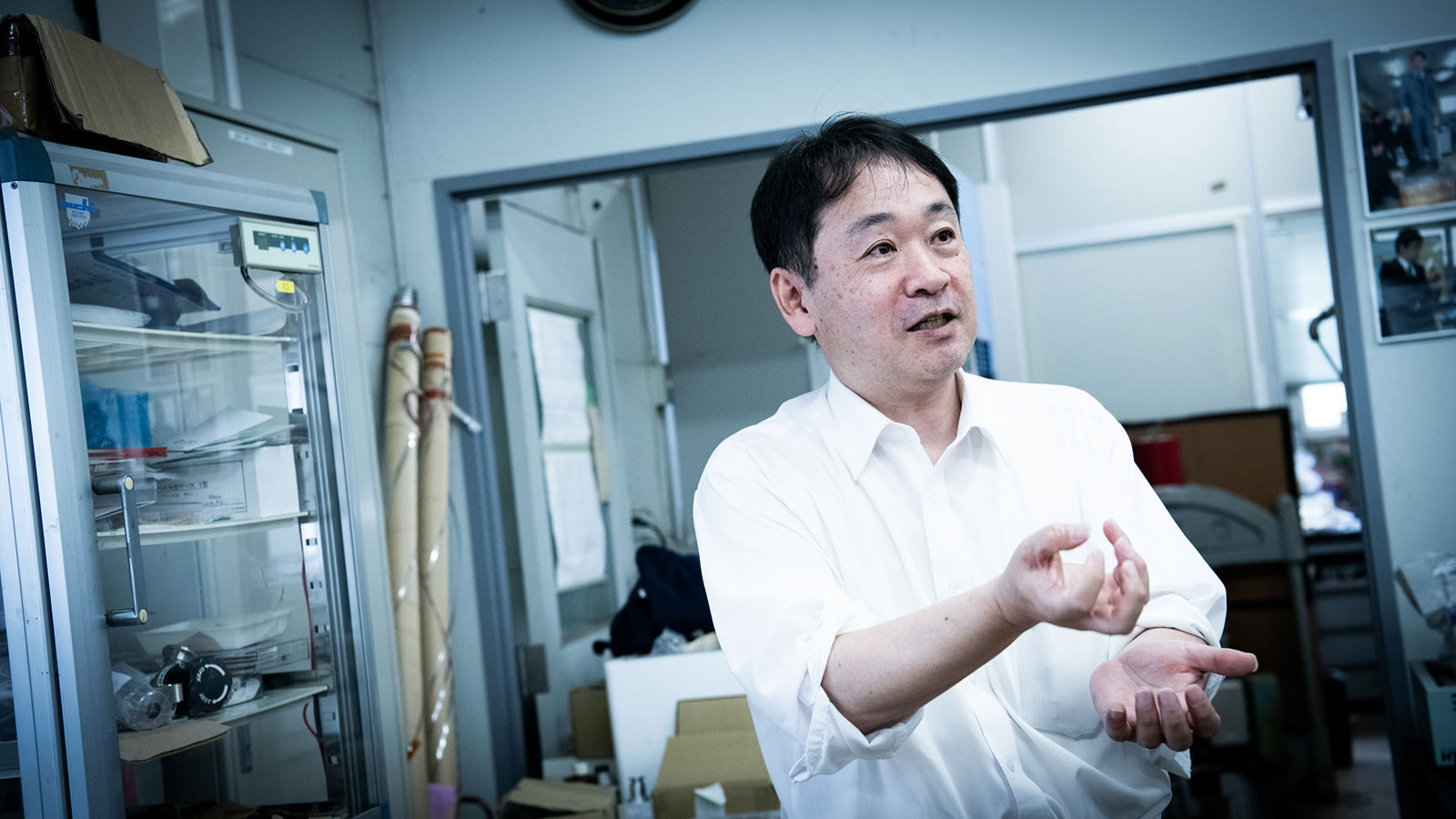
Here, Mr. Tomita seems to have gained one perspective. At the Superconductivity Engineering Laboratory, superconductivity researchers had gathered from various companies. In order to create materials that realize high-temperature superconductivity, experiments are conducted by mixing and baking various materials, and there were many people who were good at mixing powders, which is the core technology. I will return to the Railway Research Institute after a few years on secondment. It was unlikely that I myself would be of any use in fighting with the experts in powder mixing, so I looked for some area of research where I could make a contribution, an area in which there was a gap," said Tomita.
The gap was to ensure the durability of high-temperature superconducting materials. Many researchers try to create materials that improve the performance of high-temperature superconductivity, and if they don't work, they throw them away. Mr. Tomita was collecting and measuring these discarded samples when he had an epiphany. To improve performance," he said, "you have to make sure that microcracks don't form when you sinter the high-temperature superconducting material and grow crystals while lowering the temperature. Researchers are trying to create a material without cracks, but it is difficult to completely eliminate them. I assumed that cracks would remain after manufacturing and tried to develop a technology to prevent them from extending.
Specifically, an epoxy resin with low viscosity is placed in the cracked area and impregnated by vacuum. The resin in the cracked area suppresses further crack propagation due to electromagnetic forces generated from the internal superconducting current, and the route of the current path in the superconducting body is maintained. The magnitude of this current is the generated magnetic field value that indicates the capability of the superconducting magnet. Mr. Tomita said, "I started my research thinking that I could achieve this in a two to three year secondment period. The research progressed well, and it became clear that improved superconducting properties could be obtained. After his secondment, he further advanced his research into the generation of extremely high magnetic fields, incorporating metals with low melting points as impregnating materials in addition to the resins that had been used up to that point. This was because the metal with high thermoelectric conductivity had the effect of removing minute heat sources inside the superconducting body. At that time, the research was different from the mainstream trend research at academic conferences, so it seemed outlandish and comparative evaluations were difficult. In such a situation, we decided to submit our research to the British scientific journal "nature,"" he says.
By improving the durability of the high-temperature superconductor and suppressing internal micro-heating during high magnetic field generation, we succeeded in capturing a magnetic field of over 17 tesla, the world's highest for a high-temperature superconducting magnet at the time. nature magazine jumped on our work because of its emphasis on originality. Just as he was pursuing his own role in the limited time available to him, Tomita says, "The results of the Railway Research Institute's research were published in the journal Nature, which caused a stir around us," and led to this achievement.
Become an engineer who bridges the gap between basic research and industrial applications
After that, Mr. Tomita was invited by a research institute at a U.S. university, where he pursued research on high-temperature superconductivity for three years. Furthermore, after returning to Japan and returning to the Railway Research Institute, he began researching how to utilize high-temperature superconductivity in railroad systems. The focus of his research shifted from materials research on high-temperature superconductivity to how to utilize high-temperature superconductivity in systems that can be used in railroads.
In a field such as high-temperature superconductivity, researchers tend to be divided into two extremes: those who conduct basic research on materials and the like, and those who study industrial applications near the exit. Mr. Tomita points out, "There are no researchers who can bridge the gap between the two. There are few researchers who are willing to work on everything from basic research to application. In this situation, he says, "At the Railway Research Institute, we sometimes return to basic research even when we are doing applied research. I have come to think that I want to fill in the "in-between" of important technologies while I am still alive, which cannot be done if each is broken down," he says.
Mr. Tomita may have been a special researcher to begin with. He conducted basic research on high-temperature superconductivity and is capable of both creating and analyzing materials. He has also experienced the field of evaluating them and incorporating them into actual systems in the research and development of the Linear Central Shinkansen. To utilize superconductivity as a system, it is necessary to create the equipment and environment that will run the system, but there are only a few researchers who can focus on applications and applications, and Mr. Tomita was in that position.
For example, it is not enough to have only high-temperature superconducting materials for the superconducting power transmission that we have begun to test at Izu Hakone Railway. For example, it is not enough just to have high-temperature superconducting material. After the material is made into wire, a container to cool it with liquid nitrogen must also be prepared. For this purpose, a vacuum insulation tube is necessary, but Japan did not have the technology. I tracked down old records and found a note that 20 years ago we sold German-made vacuum insulation tube manufacturing equipment to a company in Oita, Japan. By finding and improving this equipment, we succeeded in manufacturing liquid nitrogen vacuum insulation tubes in Japan," said Tomita.
Mr. Tomita moved to be the foot and hand to overcome the limitations and make the system usable as a system. There is a lot of history of prototype cooling systems and vacuum insulation tubes lying within the premises of the Railway Research Institute. It is not just the research on a particular "point" but the perspective of configuring the system for the final intended application or applications that makes it possible to achieve the results of comprehensive research that connects the dots.
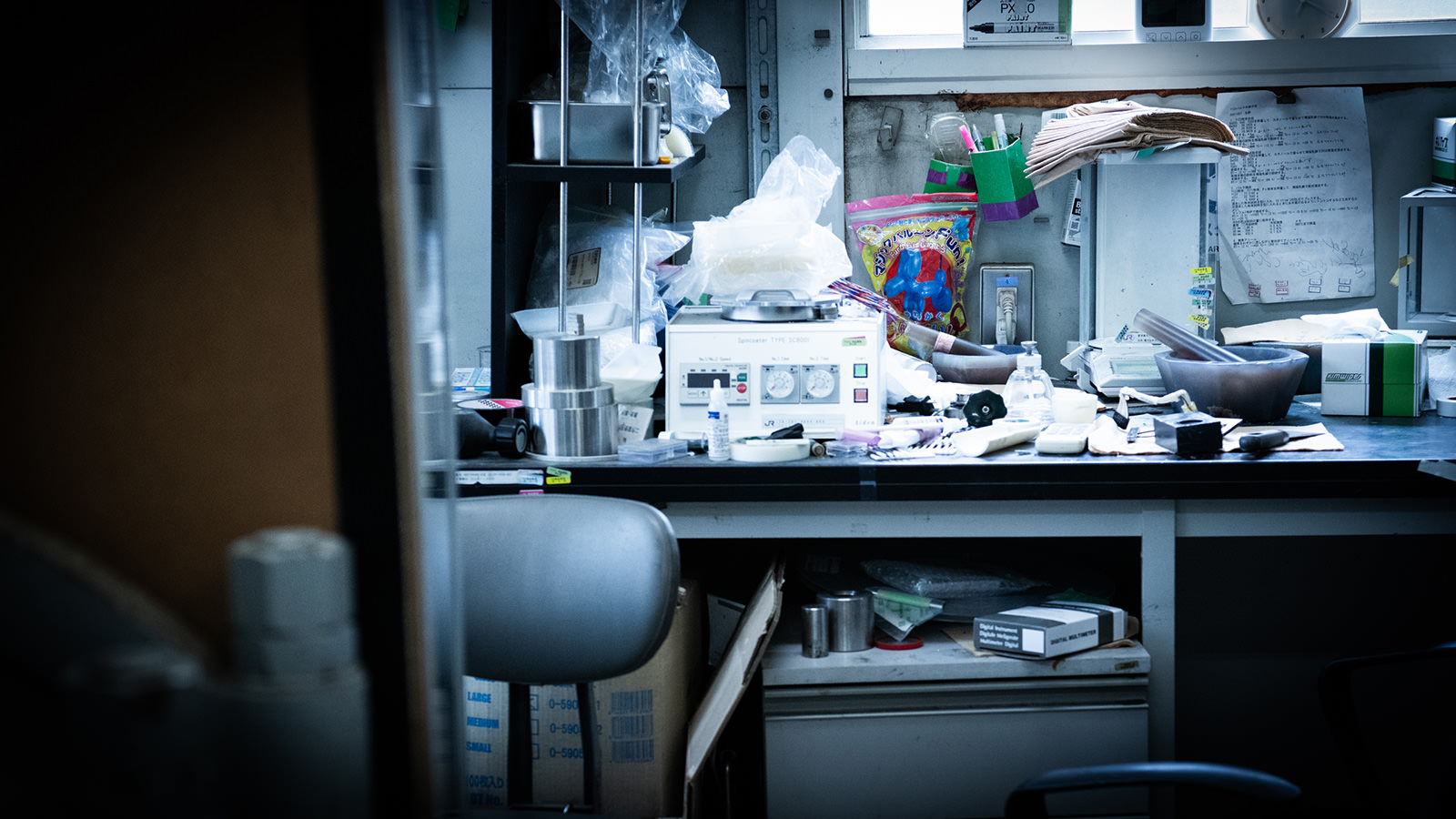
What it means to use advanced technology to solve practical problems
We asked Mr. Tomita, who has a broad perspective and an obsession with goals, about the relationship between 5G (5th generation mobile communication systems) and railroads. Mr. Tomita said that he is not very familiar with telecommunication-related matters, but he replied, "The IT world is a flowery one, with ample research funds, and I have the image that people with discerning minds are engaged in research and development. Even in railroad communications, there is a willingness to incorporate new things. Izu Hakone Railway, which is verifying the operation of superconducting power transmission, has a system that links information from the field to the control center. Currently, the system communicates using an old mechanism, but by successfully incorporating 5G, we may be able to change it to a new mechanism," he says.
Mr. Tomita feels that superconductivity and 5G have something in common. Superconductivity is an amazing technology, but there is an image that it is not something that can be used right now. However, if used well, it can be a tool to solve the current power transmission problems of private railroads, as was started by Izu Hakone Railway. 5G may seem very high-end and futuristic to the uninitiated, but I think it has a wide range of applications that can be used for more than just this. In both cases, we can think of ways to create value in the field right now, rather than thinking that using it in special situations is the only way to popularize it," said Tomita.
Mr. Tomita said, "As an ambition, I believe we must continue to promote superconductivity. After all, even people in the railroad industry think that superconductivity is a special, high-end technology used in linear systems and other applications, and that it is a dream technology for the future. In fact, this is not true. Superconductivity can be used to solve problems even on conventional lines with steel wheels. As in the case of the Izu Hakone Railway, opportunities and triggers are being seized," he continues.
In fact, Mr. Tomita says he is glad that superconducting power transmission was implemented at Izu Hakone Railway. There was a gathering of people from the private railway industry, and we heard people say that if Izu Hakone Railway could do it, we could do it, too," he said. Izu Hakone Railway is overjoyed to see it on the front page of the newspaper. Superconductivity is not just a dream technology for the future, but a real technology that has the effect of boosting regional railroads," says Tomita. As a researcher specializing in superconductivity, Mr. Tomita has a paper published in Nature, but it seems that his eyes are focused on solving the problems of our city's railroads and revitalizing the local community.
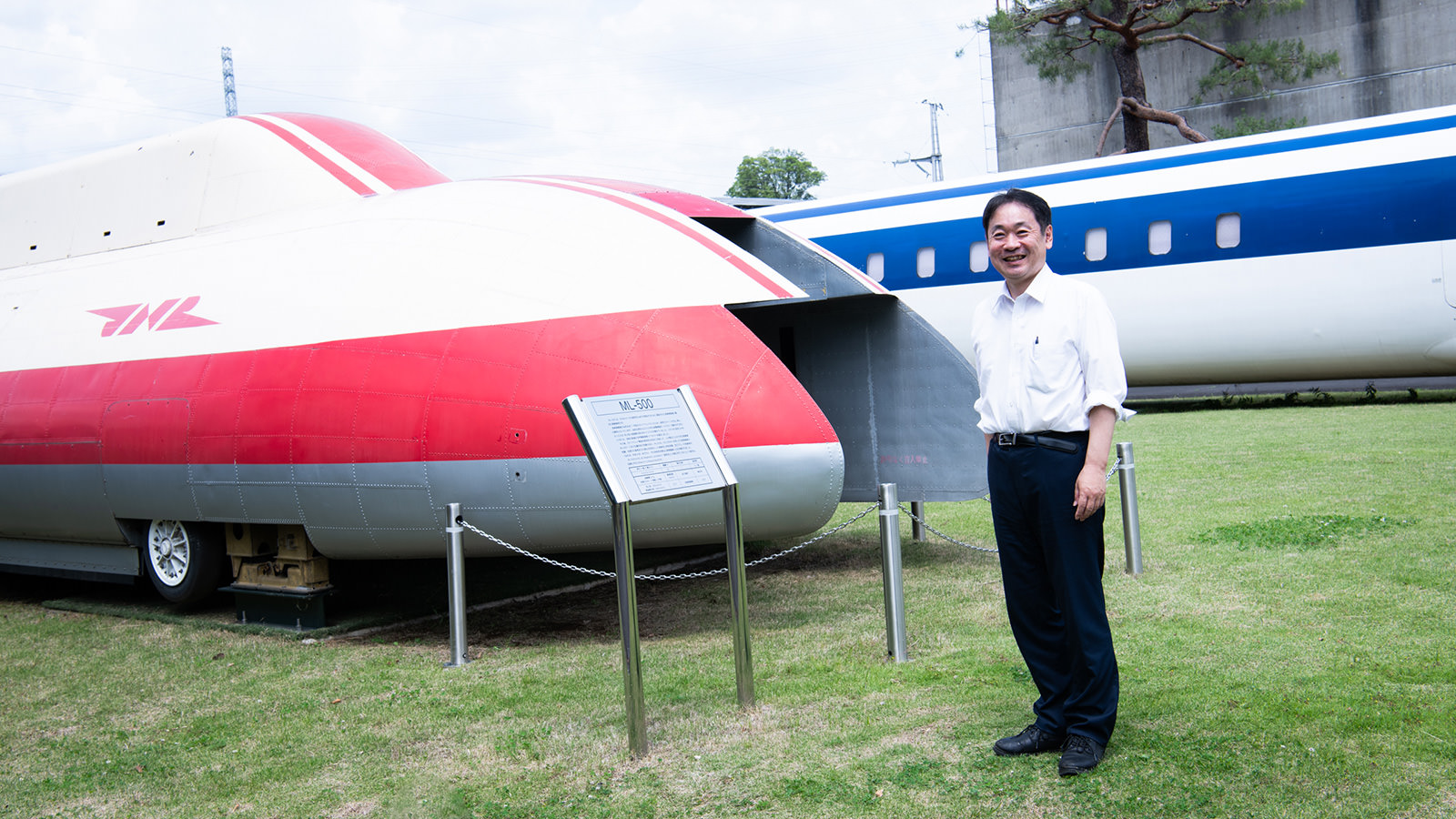
Mr. Masaru Tomita, Director, Floating Railroad Technology Research Department, Railway Technical Research Institute
1994 Project Team for Construction of Yamanashi Linear Test Line, Floating Railroad Development Division, Railway Research Institute, Japan; 1998 Superconductivity Engineering Laboratory; 2004 Massachusetts Institute of Technology (MIT) (Enrolled~2007); 2008 Director, Superconductivity Application Research Office, Railway Research Institute, Japan; 2013 Director in charge of R&D Promotion Department of the same, from 2021 Current position. He has been a Fellow of the New Energy and Industrial Technology Development Organization (Energy and Hydrogen Strategy), Visiting Professor at Yokohama National University, Visiting Professor at Kyushu Institute of Technology, and others. Degrees: Master of Sociology (Hitotsubashi University) and Information Engineering (Kyushu Institute of Technology); Doctor of Engineering (University of Tokyo)



